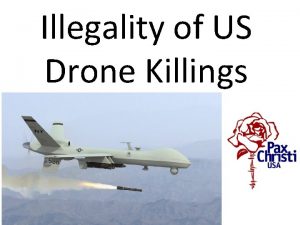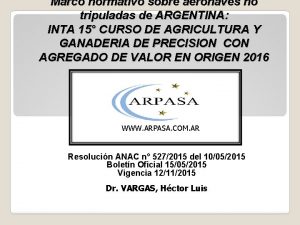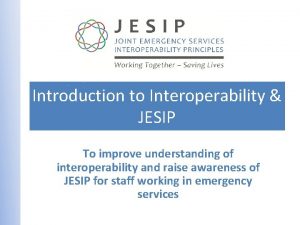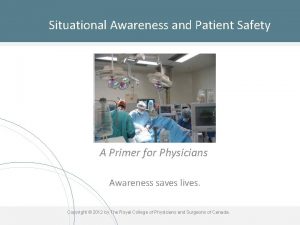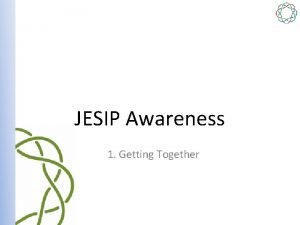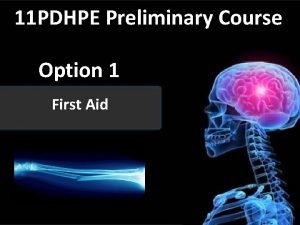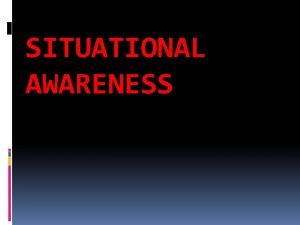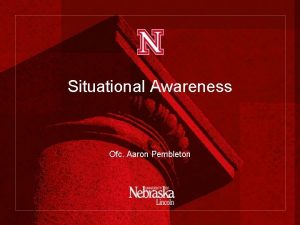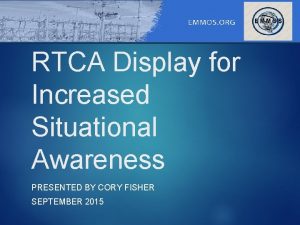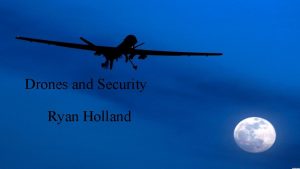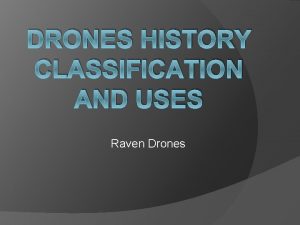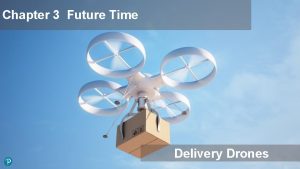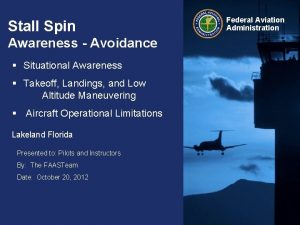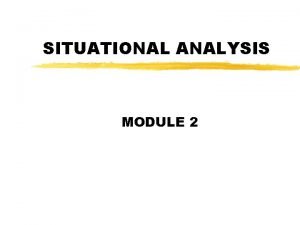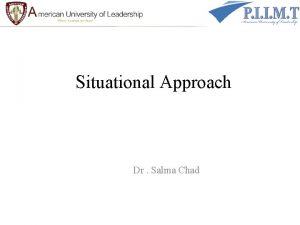Drones an aid to increased Situational Awareness in














- Slides: 14

Drones – an aid to increased Situational Awareness in pilotage operations Ves. Co Systems, Remote Pilot supported by the Danish Maritime Fond

Roadmap of this presentation The Vision for the use of Drones • Who are Ves. Co Systems • COWI report 2014 • Piloting as a control problem • Vision for shore based pilotage The process of using new technologies • Graduating Situational awareness • Redundancy and stability How far have we come? • Thoughts and visualization • Will the ships buy shore based pilotage?

The Vision for the use of Drones Ves. Co Systems – a joint venture between: Blue Oceans Robotics Third Element Aviation Dan. Pilot Supported by the Danish Maritime Fond

The Vision for the use of Drones COWI concluded in 2014 that the best potential for shore based pilotage would be for sea pilotage relating to specific areas in Danish waters based on safety assessment Safety assessment of shore based pilotage in the three scenarios Source: COWI, November 2014, DMA. Technological Assessment ofthe possibility of shore based pilotage in Danish Waters.

The Vision for the use of Drones ”If everything else remains unchanged remote pilotage will always lead to less efficient control of the systems” (Karl Bruno & Margareta Lützhöft) Conviction: ”That the issue of remote pilotage is best discussed in the context of Control and not in the context of Technology” (Karl Bruno & Margareta Lützhöft) Source: Karl Bruno & Margerate Lützhöft, Shore based Pilotage: Pilot or Autopilot? Piloting as a control problem, Journal of Navigator, 2009

The Vision for the use of Drones Our goal is to take advantage of the increased potential in new technologies and thereby increase the control i. e. Situational Awareness focusing on the marine harbor pilotage operations. Thus the vision for shores based pilotage is that a harbor pilotage operation is to be performed at least to the same level of quality as if the pilot were on board the vessel ensuring: • Increased safety for marine pilots • Making harbor pilotage available for more ships • More efficient pilotage operations

The process of using new technologies Control = Situational Awareness (SA) We need to define the Situational Awareness Level (SAL) in relation to Shores Based Pilotage Autonomy levels (AL) adapted from Lloyds Register

The process of using new technologies This means: • Working with experienced experts • A Safety ll approach – why does it work? • Securing communication stability and redundancy • Making sure that perception and communication is supported visually on board and ashore (the pilot), bird eye view, helm position, engine orders i. e. the requirement to the HMI interface • Make an effort to mitigate the fact that the Captain of a ship and the marine pilot is not standing besides each other

How far have we come? System 1: Aerial overview of entrance and berth areas Remote. Pilot consists of two systems. System 1 is a fleet of drones dedicated to only provide an aerial overview to the pilot of the entrance and berth areas during port pilotage operations, and possibly to verify/calibrate the positioning of the Safe. Pilot system in combination with an overlay on top of the real-time videofeed.

How far have we come? System 2: Delivery of equipment package enabling shore-based piloting Remote. Pilot consists of two systems. System 2 is a fleet of drones dedicated to only carry out an equipment package (i. Pad, communication, GNSS, cameras etc. ) for enabling shore-based piloting to vessels requesting pilotage.

How far have we come?

How far have we come? Visualization on the Portable Pilot Unit (PPU)

How far have we come? • Still testing – Issues like, perception, visibility, weather, language skills, batteries etc. • Will it work? • Legislation? • Will the ships use the product? • If it works in port, it will also be at path to shore based pilotage for sea pilotage • Increased safety for marine pilots • Increased pilotage availability for more ships due to lower cost • More reliant and efficient operation

The future was here Thank you
 Murder drones b
Murder drones b Legislacion drones argentina
Legislacion drones argentina Rob goossens armen
Rob goossens armen Jdm jesip
Jdm jesip Elaine bromiley case
Elaine bromiley case Jesip app
Jesip app Situational awareness construction
Situational awareness construction Privacy awareness and hipaa awareness training cvs
Privacy awareness and hipaa awareness training cvs Pdhpe first aid
Pdhpe first aid St andrew medical centre
St andrew medical centre First aid merit badge first aid kit
First aid merit badge first aid kit Increased tactile fremitus
Increased tactile fremitus Tactile fremitus
Tactile fremitus Unit 2 physiology of fitness
Unit 2 physiology of fitness How many types of jaundice
How many types of jaundice
